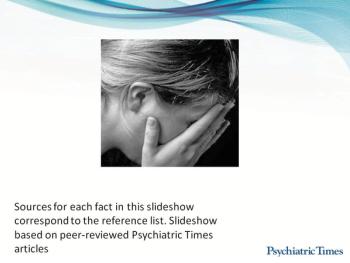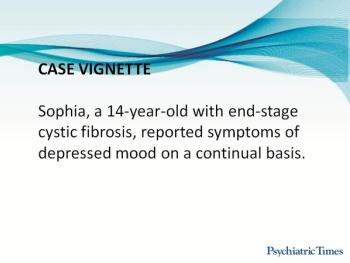
Consider Nico-he is a bilingual dog-he understands and responds to both Russian and English because both languages are spoken at home.

Consider Nico-he is a bilingual dog-he understands and responds to both Russian and English because both languages are spoken at home.

An expert discusses the clinical, biological, and genetic components of de novo mutations and autism spectrum disorders.

Eating disorders are often complicated by devastating medical problems and may result in death. Although studies suggest a multifactorial cause for the disorder, treatment is a still challenge.

What therapy is considered the "gold standard” in treating childhood and adolescent depression? Find out in this quiz,

The target for physical activity in adolescents is 60 or more minutes of daily aerobic activity. But it is unlikely that the majority of youths achieve this goal.

A look at the 2015 joint American Society for Adolescent Psychiatry (ASAP) and International Society for Adolescent Psychiatry and Psychology (ISAPP) Scientific Meeting in March. There, the author will be presenting two sessions that address adolescent sexuality and sexual development issues.

This case of a 14-year-old female patient with end-stage cystic fibrosis illustrates the psychiatrist's critical role in ensuring quality end-of-life care.

In this brief video, an expert summarizes the effects of marijuana use on the teenage brain, as well as new strategies to discuss the consequences of drug use with adolescents.

An overview of some of the recent scientific data examining the relationship between adolescent marijuana use and later onset of neuropsychiatric disorders.

In the US, suicide is a leading cause of death, ranking third among youths aged 15 to 24. Rates of suicide attempts and death are highest among US Pacific Island indigenous youths. Emergency departments play a key role in suicide prevention, especially in this and other minority populations.

An expert Q&A with Laurence Steinberg, PhD. His newest book offers insights into the malleable adolescent brain and provides guidance to parents hoping to better understand adolescents.

Whether by traditional means or via cyberspace, bullying and peer victimization put adolescents at increased risk for suicide, especially when comorbid psychopathology is present.

Are psychiatrists mandated to report patient self-disclosures of child abuse in every case? The answer might surprise you.

Why do patients with eating disorders resist treatment? How can the clinician address resistance?

Boyhood’s power-and poignance-centrally derives from one’s visceral experience of the authentic signatures of time on its actors’ features and forms . . . life cycle theory made flesh as it were.

All psychiatrists must familiarize themselves with relevant reporting statutes and be knowledgeable about what constitutes neglect or abuse.

Maltreatment at an early age casts a very long shadow. Here: a look at the long-term effects of early childhood trauma.

Why do you need to know about Munchausen by Proxy? Answers here.

A brief review of interesting new findings on suicidality and depression treatment in youths.

A mother recalls seeing a donation box with a photo of a little boy with leukemia in a grocery store checkout line but never one of a child with serious mental illness. How can this be if twice as many children and young people die from suicide than those who die of all cancers combined? More in this commentary.

Suicide is a pervasive public health issue for adolescents in Hawaii. In response, a youth leadership model was initiated to empower young leaders in suicide prevention through evidence-based training, relationship building, and community awareness.

In psychiatry, we do not complete physical exams; much of our diagnosis is born out of our observations, interviews, and conversations. Other medical fields, particularly surgery, require manual, technical, and motor skills. In this manner, psychiatry is unique. More in this commentary.

An update on the diagnosis, causation, and treatment of chronic depressive problems. The focus is on the recently introduced diagnostic category of persistent depressive disorder.

Epidemiological research has shown that the Māori people of New Zealand are approximately twice as likely to have serious psychiatric illness compared with non-Māori. Here, a child and adolescent psychiatrist describes her work in Aotearoa, New Zealand.

Innovative approaches that advance our understanding of the mechanisms that confer risk for psychiatric illness in youths is the focus.